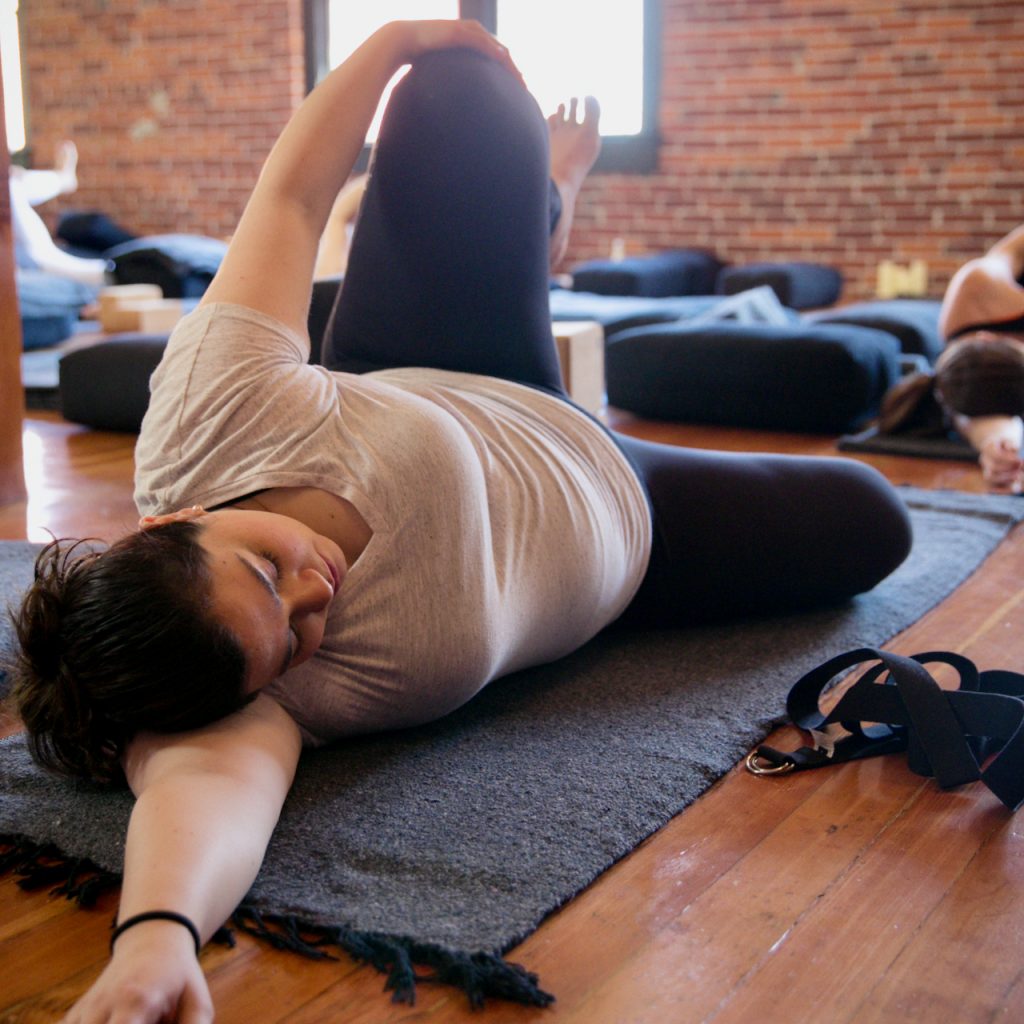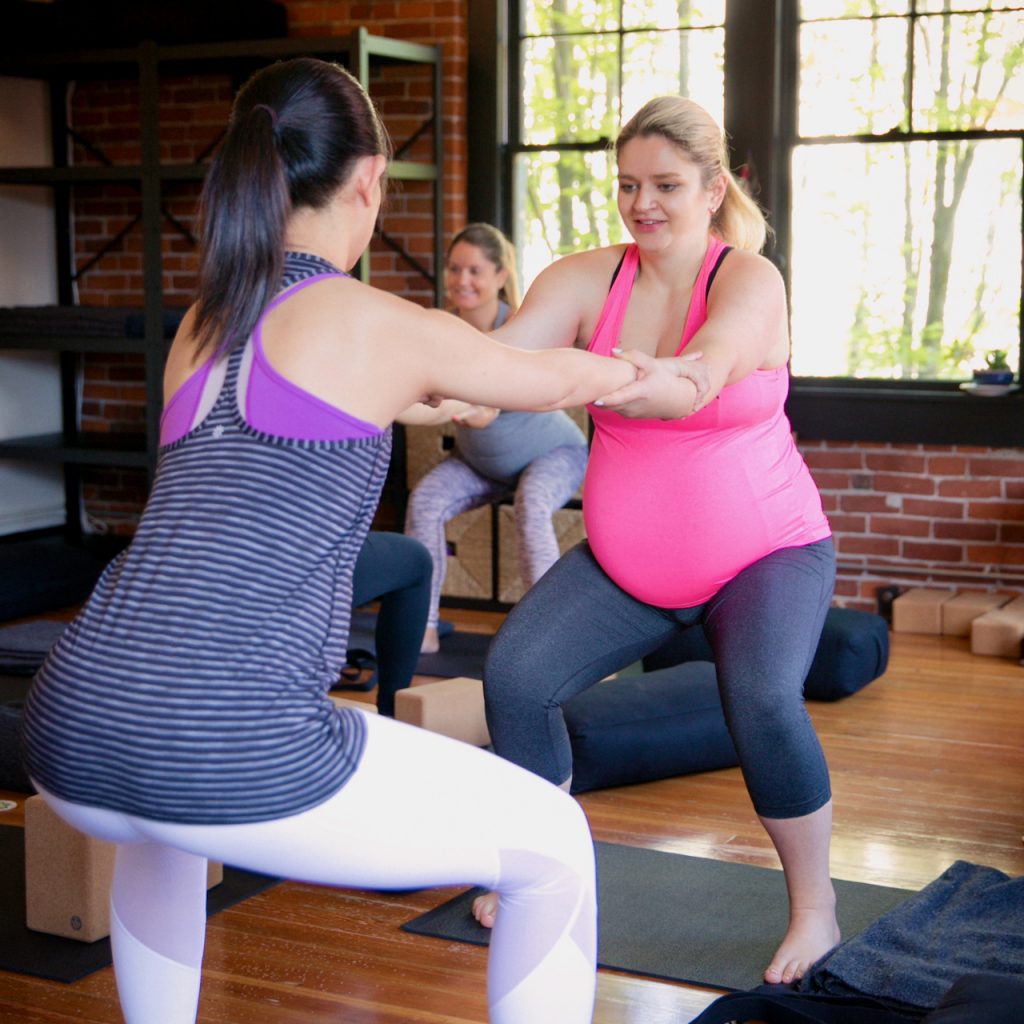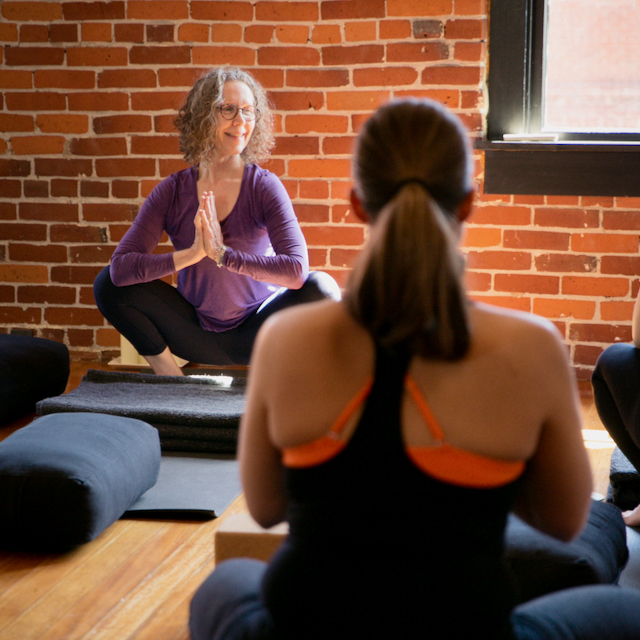By Carol Gray, LMT, CST, RPYT, ERYT-200
Is squatting OK to do during pregnancy?
Yes! This is one of the most beneficial poses to do during pregnancy. Do some version of this every day! When you were a toddler, you could squat. Easily. When we use Western-style toilets to eliminate, we have fewer daily opportunities to squat. In many parts of the world, squatting is a position of rest. With practice, you can reclaim your squat.
Is there more than one way to Squat?
Yes.
 The Standard Upright Squat
The Standard Upright Squat
The person in the picture is flat footed with heels in and toes out. The thighs are rolled outward. This widens and opens the top of the pelvis – the inlet. It’s a great preparation for any inversion (such as downward-facing dog) that will slide the baby toward the top of the pelvis. Why do we want to slide babies a little ways up in the pelvis? Because it gives babies the opportunity to move around and reposition their heads – or other presenting parts. There’s more room for them to do this in the upper part of the pelvis. This promotes optimal fetal positioning.
A Slightly Different Upright Squat
With your knees still spread wide, roll your thighs inward and face your toes a little more straight ahead. This opens up the bottom of the pelvis – the outlet. You should feel your sitting bones spreading wider apart. This is good – in the moment – for birthing your baby. It can increase the diameter of your pelvic outlet as much as 30%. That’s a lot!
Side-Lying Squat
Lie on your side with your head resting on your arm or in the palm of your hand. Bring your top knee toward your shoulder. If you have pubic symphysis pain or instability use your arm strength to lift your knee. Grasp either behind or in front of your top knee with your top hand. Move your knees as far apart from each other as possible and flex your toes toward your face. Imagine you are really in a flat-footed squat on the floor. You can experiment with rolling thighs inward and outward. Notice how it feels in your pelvis and what happens to your sitting bones.
Remember to do both sides!
This is a great position for giving birth. Someone else can hold your top leg for you.
Partner Squat
 Decide whose arms go on top and whose arms go on the bottom. Grasp each other’s forearms. Stand far enough apart to keep your arms straight. Spread your feet wide. Keeping your arms straight, hold on and begin to lower. As you both lower into the squat LEAN BACK. TRUST YOUR PARTNER. The first person who wants to rise up says so. Then you both rise together. Remember to LEAN BACK on the way up. This activity will strengthen your friendship and your legs.
Decide whose arms go on top and whose arms go on the bottom. Grasp each other’s forearms. Stand far enough apart to keep your arms straight. Spread your feet wide. Keeping your arms straight, hold on and begin to lower. As you both lower into the squat LEAN BACK. TRUST YOUR PARTNER. The first person who wants to rise up says so. Then you both rise together. Remember to LEAN BACK on the way up. This activity will strengthen your friendship and your legs.
Should SQUATTING be done differently during pregnancy?
Maybe. If you can’t get your heels to the floor in the upright versions place a rolled towel, blanket or yoga mat under your heels for support. You can squat while seated on a block. You can also squat with your back against a wall. If you have pubic symphysis pain or instability try the side-lying version. You can grasp your knee and use your arm strength to lift your leg.
What’s most important?
Lengthen your spine in the upright versions. Lift your entire torso away from your pelvis. Make room for your baby! In the side-lying version, imagine you are in a flat footed squat on the floor. Stay engaged!
Once Again, WHY SHOULD I DO This?
• Squatting makes space for babies to assume more ideal positions for gestation and birth.
• It promotes flexibility in the lower body.
• Squatting is birth preparation.
• It opens the pelvic inlet and strengthens the pelvic floor with thighs rolled outward.
• Squatting relaxes the pelvic floor and opens the pelvic outlet with thighs rolled inward.
• With thighs rolled inward, squatting can increase the diameter of your pelvic outlet as much as 30%.
• It’s a great position for giving birth. Someone else can hold your top leg for you.
About Carol Gray
 Carol is the founder and owner of MamaSpace Yoga. She has been a therapeutic bodyworker in private practice for over 30 years. She specializes in Craniosacral Therapy for pregnant and postpartum people and infants. Carol has spent years developing hands-on techniques to enhance the mobility in pregnant bodies including the bony pelvis, the abdominal organs, the support structures and lower segment of the uterus. She is proud to have pioneered the integration of this gentle manual therapy into prenatal care, the birth place and postpartum care for birthing parents and babies. The goal is to give babies more room to develop, grow and get born. Her specially-designed yoga classes have grown naturally from the roots of bodywork and yoga.
Carol is the founder and owner of MamaSpace Yoga. She has been a therapeutic bodyworker in private practice for over 30 years. She specializes in Craniosacral Therapy for pregnant and postpartum people and infants. Carol has spent years developing hands-on techniques to enhance the mobility in pregnant bodies including the bony pelvis, the abdominal organs, the support structures and lower segment of the uterus. She is proud to have pioneered the integration of this gentle manual therapy into prenatal care, the birth place and postpartum care for birthing parents and babies. The goal is to give babies more room to develop, grow and get born. Her specially-designed yoga classes have grown naturally from the roots of bodywork and yoga.
Carol has dedicated her professional life to supporting expectant and new families by promoting gentle aware birth. She has attended births for over 35 years – at first as a doula and from 2000 to 2012 as a midwife. She has since retired from attending births in order to focus on practicing and teaching CST and prenatal yoga. Her many years as a birth worker have forever changed her and her worldview. Those experiences remain an integral part of who she is as a therapist and teacher.
Carol is the founder and director of the The Carol Gray Center for CST Studies®. She teaches high-quality, small group classes that are appropriate for bodyworkers, birth attendants and other health professionals. She is approved by the National Certification Board for Therapeutic Massage and Bodywork (NCBTMB) as a continuing education approved provider.

